The Hunter Gets Captured By The Game: Halloween (2018)
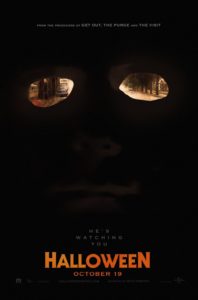 “Everyday brings change, and the world puts on a new face
“Everyday brings change, and the world puts on a new face
Sudden things rearrange, and this whole world seems like a new place
Oh yeah, secretly I been tailing you
Like a fox that prays on a rabbit
Had to get you and so I knew
I had to learn your ways and habits
Oh, you were the catch that I was after
But I looked up and I was in your arms and I knew that I was captured
What’s this whole world comin’ to
Things just ain’t the same
Any time the hunter gets captured by the game”
—”The Hunter Gets Captured by the Game” by The Marvelettes (written by Smokey Robinson)
At this point in the Halloween franchise—40 years on, even the most devoted fans cannot make a cohesive narrative trajectory without sounding like crazed conspiracy theorists on the level of those who who contend that aliens built the pyramids or the moon landing was faked. Where the first film in 1978 kept most everything ambiguous down to the very nature of “The Shape” itself/himself, the remainder of the series has—with varying degrees of failure—attempted to explain why Michael, Laurie and Haddonfield, IL are drawn to each other. Considering the first film was conceptually meant as a singular film within an anthology series of stories on Halloween night, the series has been able to maintain a general popularity by seeking to answer questions that were never meant to be asked.
 Halloween II (1981) is generally considered the best sequel in the franchise because it sought to quite literally continue the story directly following the events of the first film. Taken as a pair, the films make a fairly coherent storyline with one massive surprise: Michael Myers is Laurie Strode’s brother. This is a narrative twist that has stalked the legacy of the franchise ever since ‘81. It’s a hard conceit to shake considering it has become part of horror canon. Most people equate Myers and Strode as siblings without having any significant relationship with the films. The only thing more recognizable would be John Carpenter’s “Halloween Theme” which has found its way into every film in the franchise in some form or fashion. It’s ironic then that it took Carpenter getting drunk in a hotel room to get this script written. His creation had already become a monster that was turning against its master.
Halloween II (1981) is generally considered the best sequel in the franchise because it sought to quite literally continue the story directly following the events of the first film. Taken as a pair, the films make a fairly coherent storyline with one massive surprise: Michael Myers is Laurie Strode’s brother. This is a narrative twist that has stalked the legacy of the franchise ever since ‘81. It’s a hard conceit to shake considering it has become part of horror canon. Most people equate Myers and Strode as siblings without having any significant relationship with the films. The only thing more recognizable would be John Carpenter’s “Halloween Theme” which has found its way into every film in the franchise in some form or fashion. It’s ironic then that it took Carpenter getting drunk in a hotel room to get this script written. His creation had already become a monster that was turning against its master.
By the time Halloween III: Season of the Witch (1982) came along a year later, the iconography of Myers had grown bigger than the films themselves. III did not do well commercially or critically at the time because Halloween = Myers, not an Irish warlock attempting to kill people (largely kids) by way of cursed Halloween masks. While the film has undergone reappraisals recently and has its staunch defenders—myself included, it ends up being a one-off story that gets swallowed up by the first wave of teen slashers, a horror movement which Carpenter’s first film unwittingly blazed the trail. By the time the early-mid 80s were in swing, people wanted Michael Myers and the only means of scripting further films was by defining The Shape by any means possible. So the films focus on descendants of Laurie Strode, they introduce a cult that allies with Myers and has connections to the origin of his evil, and a mysterious man in black who has ties to a character with basically one line in the first film. Compared to the Friday the 13th and Nightmare on Elm Street franchises, the timeline and trajectory of the narrative becomes unnecessarily convoluted.
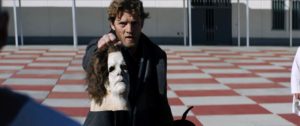 By the time Halloween: Resurrection hit theaters in 2002, the series had visibly come to the point of becoming a spoof of itself and Rob Zombie would try his hand at remaking the first two films, both of which would find poor critical reception and have not fared well within Halloween fandom either. Nine years later, we have the newest entry into the franchise which seeks to ignore all of the sequels after the first film and get back to the simplicity of Carpenter’s original vision.
By the time Halloween: Resurrection hit theaters in 2002, the series had visibly come to the point of becoming a spoof of itself and Rob Zombie would try his hand at remaking the first two films, both of which would find poor critical reception and have not fared well within Halloween fandom either. Nine years later, we have the newest entry into the franchise which seeks to ignore all of the sequels after the first film and get back to the simplicity of Carpenter’s original vision.
That was quite a few words without talking about the film this review is supposed to focus on. My apologies, but it’s hard to reckon with any new addition to the franchise without attempting to give some shape for the whole of the narrative. There is something about this storyline—along with Freddy and Jason—that has continued to intrigue us for the last 40 years. Michael Myers is a striking horror character that defies easy explanations which is why none of the sequels have successfully grappled with his being.
While Consequence of Sound’s Halloweenies crew pretty much lambasted the new film, David Gordon Green’s Halloween, as a glorified retelling of the first film with elements of Halloween II included for [bad] measure, I found their deconstruction of the film to suffer from an unwillingness to look for the differences between the two films and the ways Green smartly reversed and mirrored visual cues from the first film. It is in the small moments that Green puts his mark on the iconography of Myers and Strode.
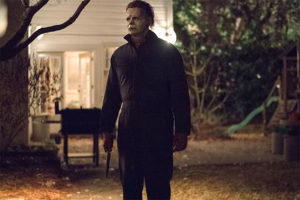 Some of the most memorable scenes from 1978’s Halloween were flipped on their head. The classic scene where Laurie looks out the classroom window and sees Michael standing there behind his getaway car is mirrored with Allyson—Laurie’s granddaughter played by newcomer, Andi Matichak—looking out a classroom window to see an aged Laurie standing, looking in on her, from across the street. Similarly, the scene in the original where Loomis shoots Michael six times and he falls from the second story window, only to disappear is re-envisioned in the new film. Michael pushes Laurie out of the second story window and notes that her body is no longer lying on the ground where she had fallen. While this could be seen as fan service, I think Green is a smart enough director to have a cohesive throughline for what he is trying to accomplish. Green, in my mind, is saying that while Myers gets all the press, all of the films, all the attention, Laurie Strode is equally unable to be taken down–unless someone really wants to argue that Resurrection should be taken seriously.
Some of the most memorable scenes from 1978’s Halloween were flipped on their head. The classic scene where Laurie looks out the classroom window and sees Michael standing there behind his getaway car is mirrored with Allyson—Laurie’s granddaughter played by newcomer, Andi Matichak—looking out a classroom window to see an aged Laurie standing, looking in on her, from across the street. Similarly, the scene in the original where Loomis shoots Michael six times and he falls from the second story window, only to disappear is re-envisioned in the new film. Michael pushes Laurie out of the second story window and notes that her body is no longer lying on the ground where she had fallen. While this could be seen as fan service, I think Green is a smart enough director to have a cohesive throughline for what he is trying to accomplish. Green, in my mind, is saying that while Myers gets all the press, all of the films, all the attention, Laurie Strode is equally unable to be taken down–unless someone really wants to argue that Resurrection should be taken seriously.
This film will get quite a bit of press as a #MeToo and #TimesUp (Laurie even utters it in the film) fable as well as getting some interpretations about how it handles trauma through generations. Both of these are very clearly involved within the scope of the film. However, from a general franchise standpoint, Halloween (2018) makes a case that there is no unstoppable cannonball of Michael Myers without the immovable object that is Laurie Strode. She is the final girl and, unlike those who followed her, she doesn’t just survive, she thrives. These symbolic visual elements that are so essential to Green’s film fit nicely in with the #MeToo and trauma interpretations as well. She is a strong woman who is regaining the time and life that was taken from her by Michael and, while the trauma has left a mark on her relationship with her family, it has also made her a much stronger, self-possessed woman who wants to protect those she loves.
 Along the same line, Green also flips the script on the original film by undermining the sex = death moral paradigm. Carpenter never intended films that followed his to take a note from this rather incidental observation of his film. However, the unfortunate by-product of the the original film was starting the slasher sub genre with its own moral retribution for young people having sex: you have sex, you die brutally. While there are definitely horny teenagers in this new iteration, there is no blunt signaling to the sexual activity of the young people. Yet they still get brutally slaughtered. The closest we get is Allyson’s friend, Vicky, who has her boyfriend, David, over to the house where she is babysitting and he has come with the expectation of sex for the first time—getting a tattoo to commemorate the day—and she responds by saying that he’ll get a “good dry-f*****g.” They both die. As Sarah Michelle Gellar sings in Southland Tales, “Teen Horniness is not a crime,” however actual penetration is in the world of slashers. None of that happens in the film nor does it seem the film is interested in telling us if any of the characters have had sex before.
Along the same line, Green also flips the script on the original film by undermining the sex = death moral paradigm. Carpenter never intended films that followed his to take a note from this rather incidental observation of his film. However, the unfortunate by-product of the the original film was starting the slasher sub genre with its own moral retribution for young people having sex: you have sex, you die brutally. While there are definitely horny teenagers in this new iteration, there is no blunt signaling to the sexual activity of the young people. Yet they still get brutally slaughtered. The closest we get is Allyson’s friend, Vicky, who has her boyfriend, David, over to the house where she is babysitting and he has come with the expectation of sex for the first time—getting a tattoo to commemorate the day—and she responds by saying that he’ll get a “good dry-f*****g.” They both die. As Sarah Michelle Gellar sings in Southland Tales, “Teen Horniness is not a crime,” however actual penetration is in the world of slashers. None of that happens in the film nor does it seem the film is interested in telling us if any of the characters have had sex before.
The fact that Michael still kills all the teenagers means that the slasher film is now freed from the bondage of its self-imposed moral code. Halloween (1978) unwittingly started it and Halloween (2018) has, perhaps, knowingly ended it. If there is another wave of slasher films, they are now free to not confuse a sharp object as a phallic instrument for penetration any longer.
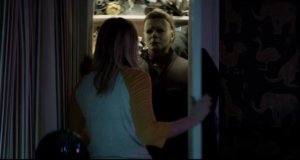 While this Halloween is not perfect, its detractors tend to overstate their displeasure with the film. Actually, with the exception of a few rare moments in other films, it does a better job of contending with the nature of Michael Myers than the other sequels/reboots have before it. He is still “The Shape,” ambiguously man and other, maimed yet invincible. He is not psychologized like in Zombie’s films or the product of some ancient Celtic evil harnessed by a cult like in the fifth and sixth installments. He is a shape that is evil and relentless going up against a woman who is good and every bit the match. And she has it out for him this time around.
While this Halloween is not perfect, its detractors tend to overstate their displeasure with the film. Actually, with the exception of a few rare moments in other films, it does a better job of contending with the nature of Michael Myers than the other sequels/reboots have before it. He is still “The Shape,” ambiguously man and other, maimed yet invincible. He is not psychologized like in Zombie’s films or the product of some ancient Celtic evil harnessed by a cult like in the fifth and sixth installments. He is a shape that is evil and relentless going up against a woman who is good and every bit the match. And she has it out for him this time around.


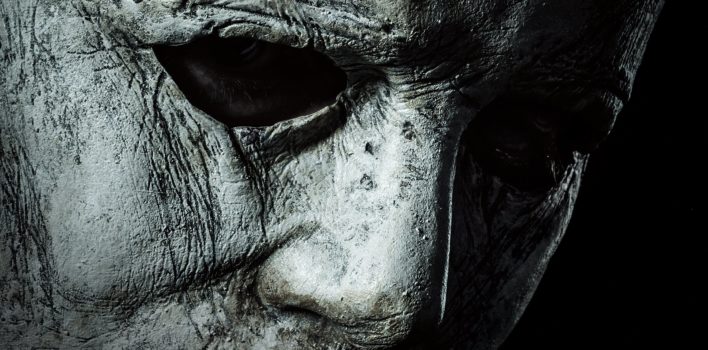
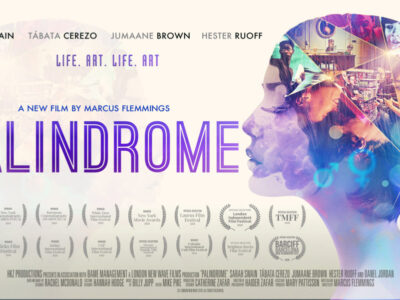
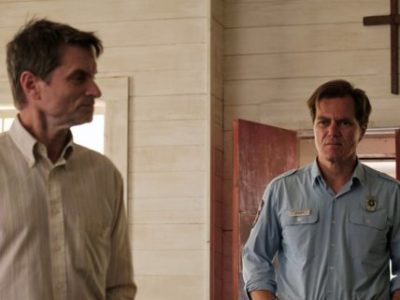
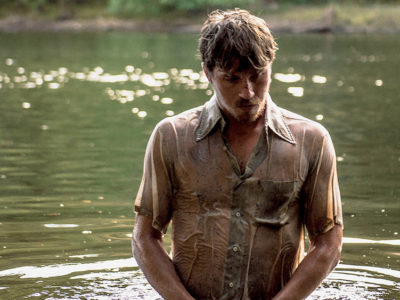



Pingback: [Caleb] – Halloween (2018): On Inexplicable Evil – Grindhouse Theology
Pingback: #187 – Halloween and Halloween (2018) | Reel World Theology